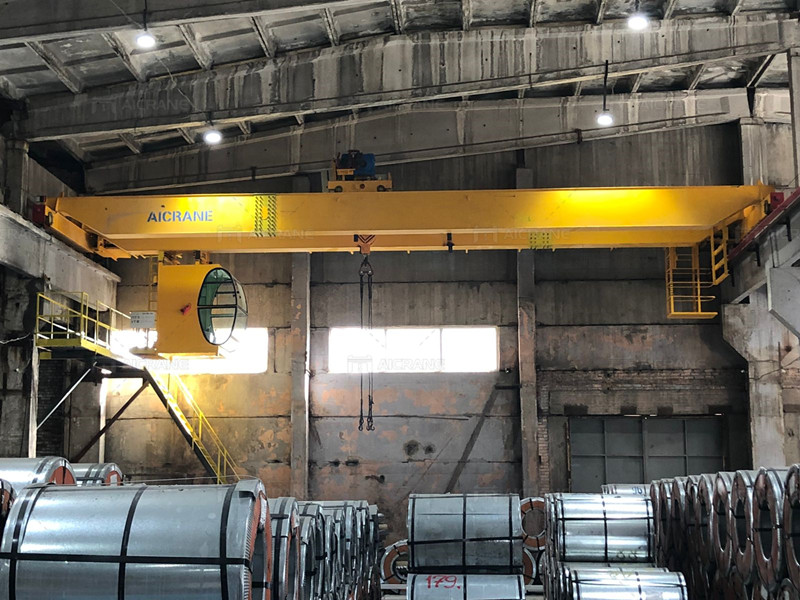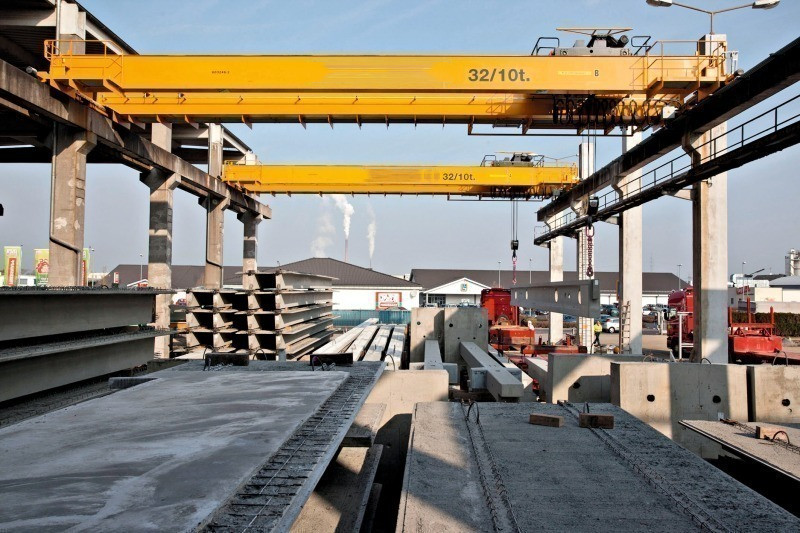Operating a double girder overhead crane involves a series of procedures, safety protocols, and best practices to ensure efficient, safe, and accurate material handling operations. These cranes are commonly used in industrial settings for lifting and moving heavy loads within a facility. Proper training, knowledge of crane controls, load handling techniques, and adherence to safety guidelines are essential for operators to effectively operate a double girder overhead crane. Below is a detailed guide on how to operate a double girder overhead crane:

Pre-Operation Inspection
Before operating the double girder overhead crane, conduct a pre-operation inspection to ensure that the crane is in good working condition and safe for use. Check for any visible signs of damage, wear, or malfunctions in the crane components, including the girders, trolleys, hoists, end carriages, electrical systems, controls, and safety devices. Inspect wire ropes, chains, hooks, and attachments for wear, deformation, or corrosion. Verify that emergency stop buttons, limit switches, overload protection devices, and warning alarms are functional.
Review Load Specifications
Review the load specifications and requirements for the lifting operation. Determine the weight of the load, center of gravity, lifting points, load attachment methods (e.g., hooks, slings, spreader bars), and any special handling considerations. Refer to load charts, capacity ratings, and manufacturer’s guidelines to ensure that the crane is capable of safely lifting and moving the load. Avoid exceeding the crane’s rated capacity or operating outside of its design limitations.
Positioning and Setup
Position the double girder overhead crane in the designated work area, aligning it with the load and ensuring sufficient clearance for crane movements. Securely anchor the crane to the runway beams or support structures to prevent shifting or instability during operation. Adjust the crane’s height, span, and trolley position as needed for optimal reach and load handling. Ensure that the runway tracks or rails are clear of obstructions and debris to facilitate smooth crane travel.
Start-Up Procedures
Follow start-up procedures for the double girder overhead crane, including powering on the control panel, activating the main power supply, and checking for proper functioning of control buttons, joysticks, and displays. Verify that the emergency stop button is accessible and operational in case of emergencies. Conduct a brief system check to ensure that all crane functions (hoisting, lowering, trolley travel, bridge travel) are responsive and operational.

Load Attachment and Lifting
Attach the load securely to the crane’s hook or lifting device using appropriate rigging methods and attachments. Ensure that the load is balanced, centered, and properly secured to prevent shifting or swinging during lifting and transport. Use taglines or guide ropes if necessary to control load movement. Slowly lift the load off the ground, applying smooth and controlled hoisting motions to avoid sudden jerks or overloads. Monitor load stability and position throughout the lifting process.
Load Movement and Positioning
Once the load is lifted, use the crane’s controls to maneuver and position the load to the desired location or destination. Coordinate trolley travel, bridge travel, and hoisting/lowering functions as needed to navigate obstacles, clearances, and elevation changes. Use caution when moving the load near personnel, equipment, or structures to prevent collisions or accidents. Maintain clear communication with spotters or ground personnel for guidance and safety.
Precise Placement and Release
Lower the load carefully and precisely to the designated placement area, ensuring accurate alignment and positioning. Use the crane’s controls to adjust hoisting speed, descent rate, and load height for controlled placement. Avoid abrupt stops or drops that may cause shock loading or damage to the load or crane components. Once the load is safely placed, release the load attachment device and confirm that the load is stable and secure before detaching the crane.
Shutdown and Post-Operation Inspection
After completing the lifting operation, shut down the double girder overhead crane following proper shutdown procedures. Power off the control panel, deactivate the main power supply, and secure the crane controls to prevent unauthorized use. Conduct a post-operation inspection of the crane, checking for any signs of wear, damage, or malfunctions that may have occurred during operation. Report any issues or abnormalities to maintenance personnel for inspection and repair.
Safety Practices and Protocols
Adhere to safety practices and protocols throughout heavy duty overhead crane operation, including wearing appropriate personal protective equipment (PPE), maintaining clear communication with coworkers, following designated pathways and operating zones, observing load capacity limits, avoiding sudden movements or overloads, and complying with safety regulations and industry standards. Participate in regular safety training, hazard assessments, and incident reporting to promote a safe work environment.
Routine Maintenance and Servicing
Engage in routine maintenance and servicing of the double girder overhead crane to ensure ongoing performance, reliability, and safety. Follow manufacturer recommended maintenance schedules for lubrication, inspections, adjustments, and component replacements. Monitor wear and tear on crane components, electrical systems, controls, and safety devices. Keep detailed records of maintenance activities, repairs, and equipment history for compliance and reference.
By following these operational guidelines and safety procedures, operators can effectively and safely operate a double girder overhead crane, contributing to efficient material handling operations, productivity, and workplace safety. Regular training, supervision, and adherence to best practices are key to maintaining crane performance and preventing accidents or incidents during crane operations.